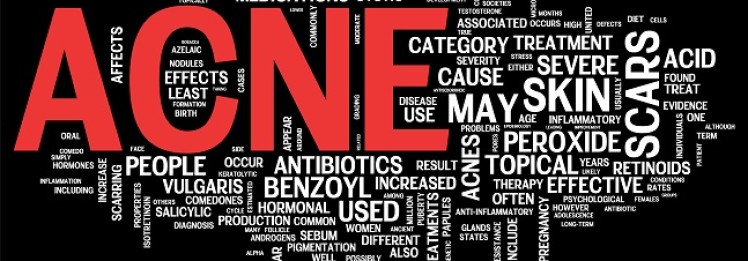To Schedule Appointments: 309-360-9035
Other Inquiries: 309-360-8077

Acne types – Acne is an inflammatory disease of the sebaceous glands, characterized by comedones and pimples, especially on the face, back, and chest, and, in severe cases, by cysts and nodules resulting in scarring. It occurs when hair folicles become plugged with oil and dead skin cells. Severe and long term acne can not only cause scarring, but can also become psychologically damaging. There are many different treatments for different types of acne, but the earlier treatment is started, the lower the risk is of lasting physical and emotional damage. Listed below are the different acne types.
The easiest of the acne types to correct are blackheads. Blackheads are a combination of oils, sebum and cellular debris that produce firm to hard plugs within hair follicles. Blackheads are open to the skin’s surface and become dark due to exposure to oxygen. They are called open comedones. When bacteria is added to these blackheads, the condition can lead to acne.
Whiteheads are a combination of oils, sebum and cellular debris that produce firm to hard plugs within hair follicles. They are closed from the skin’s surface by cellular debris at the follicle opening. Because they are closed and have no contact with oxygen, they do not oxidize or turn brown, as blackheads do. They form a light or yellow-white lump and are called milia. When bacteria is added to these plugs, the condition can lead to acne, especially cystic acne.
Acne vulgaris infections raise to papules and pustules which are what are commonly referred to as pimples. A papule is a small elevated pimple containing no fluid, but which may develop pus. Pustules have an inflamed base and contain pus. With acne vulgaris, blackheads and whiteheads are also commonly present. Acne vulgaris can occur on the face, upper and lower back and upper chest (also referred to as body acne). Some cystic conditions may occur.
One of the most severe acne types is cystic acne. A cyst forms when a follicle ruptures deep within the dermis and oils and dead cells seep into the surrounding area. Cysts are characterized as large, hard and often painful lumps underneath the surface of the skin. As a cyst works its way to the surface, it destroys many live cells and will often leave permanent scars. In severe cases, a wall will form around the debris and medical treatment is needed to clear the condition.
While adult acne and juvenile acne involve infections generated by the same bacteria, skin conditions can be very different requiring different forms of acne treatment. Factors that stimulate adult acne are frequently different than those involved with juvenile acne, acne vulgaris, cystic acne, blackheads, whiteheads, or milia.
Adult onset acne (acne that begins in the adult years) usually involves normal or combination skin or even dry and/or sensitive skin, rather than the oily skin that is typical of juvenile acne. Most acne products, however, are developed for juvenile acne and contain high concentrations of benzoyl peroxide, salicylic acid, azelaic acid and other agents that can be excessively drying and potentially irritating to adult skin. Adult skin may not tolerate persistent use of these acne treatment agents and skin sensitivity may become problematic.
Acne rosacea is a condition where papules and pustules are present in the areas of the face that are affected by rosacea. Rosacea is a chronic skin condition that involves inflammation. It shows up as flushed skin, redness and broken capillaries. When breakouts (papules and pustules) are also present, it is referred to as acne rosacea. It is typically on the cheeks, nose, chin and forehead.
Acne rosacea is difficult to treat because it involves the treatment of two different conditions. Some of the ingredients used in many acne treatments are irritating and inflaming to the skin and may be especially irritating to the rosacea. Using these acne products may cause an acne rosacea flare-up, which in turn will stimulate or aggravate the acne.
There are many different treatments for acne, and each treatment should be tailored to the different acne types and the individual person. When treating acne, diet and lifestyle also need to be addressed. Some effective treatments are Microdermabrasion, HydraFacial, Chemical Exfoliations and our new acne system.

The most important tip for all acne types is leave your hands off of your face. You can introduce bacteria to blackheads and whiteheads, turning them into pustules. You can cause a pustule to errupt, causing cysts. And, you greatly increase your risk of permanent scarring.